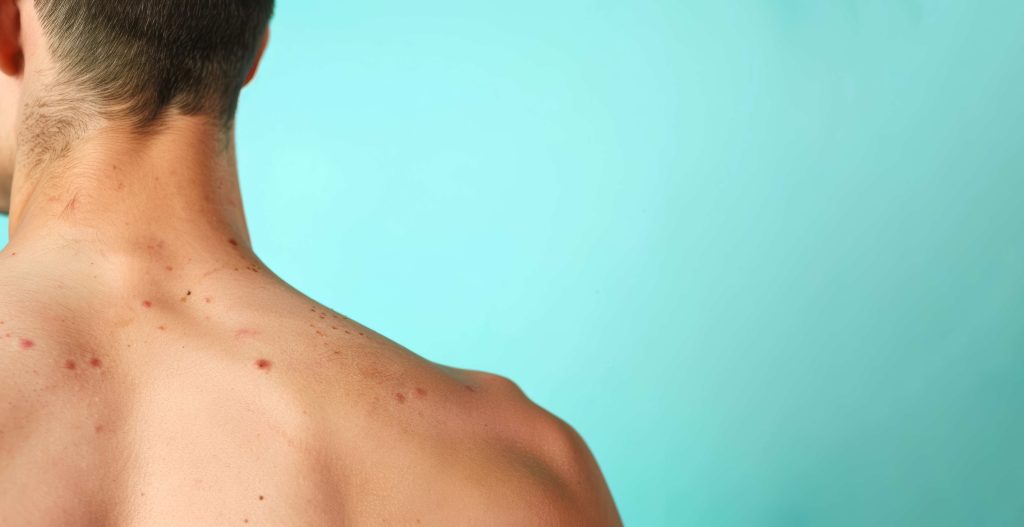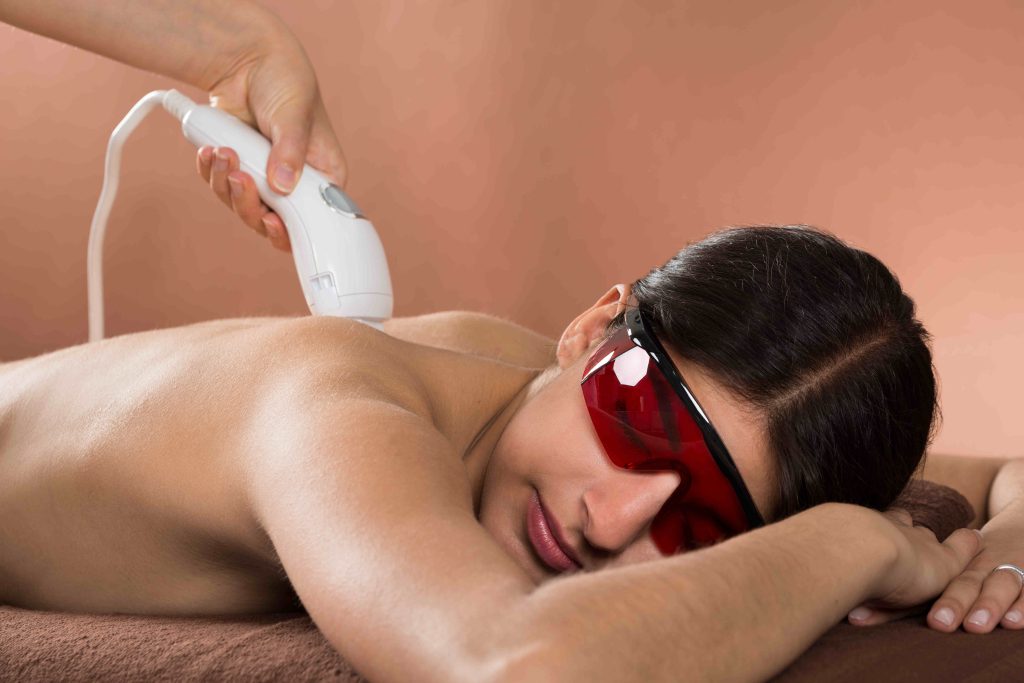 Is your back breaking out? You’re not alone. Back acne, or ‘bacne,’ can be a frustrating and persistent skin issue. While it might seem like an isolated skin issue, it’s often a symptom of underlying factors.
Is your back breaking out? You’re not alone. Back acne, or ‘bacne,’ can be a frustrating and persistent skin issue. While it might seem like an isolated skin issue, it’s often a symptom of underlying factors.
The root causes of back acne are varied, from hormonal fluctuations to lifestyle choices. This article will uncover the culprits behind those pesky pimples and provide actionable steps to clear up your skin and boost your confidence.
Causes of Back Acne
Back acne is caused by a combination of factors that contribute to clogged pores and inflammation on the skin of the back. Here are the leading causes:
1. Excess Sebum Production
The skin’s sebaceous glands produce an oily substance known as sebum, which is essential for keeping the skin moisturized. However, when these glands produce too much sebum, it can mix with dead skin cells and clog pores. This is particularly problematic on the back, where there is a high concentration of sebaceous glands, making this area more susceptible to body acne. The excess oil trapped in the pores creates an ideal environment for acne breakouts to develop.
2. Clogged Pores
Dead skin cells naturally shed from the surface of the skin, but when they are not properly exfoliated, they can accumulate and block pores. This blockage prevents sebum from escaping, leading to the formation of acne. The buildup of dead skin cells, combined with excess sebum, results in clogged pores that are more prone to becoming inflamed and developing into acne lesions.
3. Bacterial Growth
The bacteria Propionibacterium acnes (P. acnes) are naturally present on the skin and are usually harmless. However, when pores become clogged with oil and dead skin cells, these bacteria can multiply rapidly. The increase in bacterial growth leads to inflammation, which contributes to the formation of acne. The combination of clogged pores and bacterial activity is a primary factor in the development of back acne. Resources like keydermpartners.com can provide valuable insights to help you learn more about managing acne and skin health.
4. Hormonal Changes
Hormonal fluctuations, especially during puberty, menstruation, pregnancy, or as a side effect of certain medications, can lead to increased sebum production. These hormonal changes can stimulate the sebaceous glands to produce more oil, which can then clog pores and result in acne. Hormonal acne is prevalent on the back and other areas with a high density of sebaceous glands.
5. Sweat and Friction
Sweat can exacerbate acne, particularly when it mixes with oil and dead skin cells on the skin’s surface. This is often compounded by friction from tight clothing, backpacks, or sports equipment, which can irritate the skin and contribute to pore blockage. People who engage in activities that cause them to sweat heavily or wear tight-fitting clothes for extended periods are more likely to experience back acne.
6. Diet
The relationship between diet and acne is still a topic of ongoing research, but some studies suggest that certain foods may contribute to acne development. High-glycemic index foods, which cause rapid spikes in blood sugar, and dairy products have been linked to increased acne in some individuals. While the connection is not definitive, dietary choices may influence the severity of back acne in some people.
7. Stress
Stress can trigger hormonal changes that increase oil production in the skin, leading to more frequent breakouts. When the body is under stress, it produces more cortisol, a hormone that can stimulate the sebaceous glands to produce more sebum. This excess oil can clog pores and contribute to the development of back acne, especially during periods of prolonged or intense stress.
 Treatment Options for Back Acne
Treatment Options for Back Acne
Treating back acne requires a comprehensive approach that addresses the underlying causes and helps manage symptoms. Various treatment options are available, including the following:
Topical Treatments:
- Benzoyl Peroxide: It helps reduce bacteria and prevent clogged poreIt is availableble in over-the-counter washes, gels, and creams.
- Salicylic Acid: A beta-hydroxy acid that helps exfoliate the skin, unclog pores, and reduce inflammation.
- Retinoids: Derived from vitamin A, retinoids promote cell turnover and help prevent clogged pores. Prescription retinoids are often more effective than over-the-counter options.
- Alpha Hydroxy Acids (AHAs): Glycolic acid, which helps exfoliate the skin and reduce the buildup of dead skin cells.
Oral Medications:
- Antibiotics: Oral antibiotics can reduce bacteria and inflammation in severe cases of acne.
- Hormonal Treatments: For women, birth control pills or other hormonal treatments can help regulate hormones and reduce acne.
- Isotretinoin: A powerful oral retinoid used for severe, resistant acne. It is usually prescribed when other prescription treatments have failed.
Lifestyle Changes:
- Hygiene: Regularly washing the back with a gentle cleanser can help remove excess oil, sweat, and dead skin cells.
- Exfoliation: Gently exfoliating the back 1-2 times a week can help prevent clogged pores.
- Clothing Choices: Wearing loose, breathable fabrics can reduce friction and irritation that contribute to acne.
- Showering After Sweating: Showering promptly after exercise or sweating heavily can help prevent back acne.
Professional Treatments:
- Chemical Peels: Can help exfoliate the skin and reduce acne lesions.
- Laser and Light Therapy: Can target acne-causing bacteria and reduce inflammation.
- Extraction: In-office extraction by a dermatologist can help remove blackheads and whiteheads.
By understanding the root causes and taking appropriate steps to treat and prevent back acne, you can achieve clearer, healthier skin on your back.
Conclusion
With the right understanding and approach, you can achieve clear and healthy skin on your back. By pinpointing the root causes of your back acne, you can develop a tailored skincare regimen. Remember, consistency is key. While results may take time, persistent effort and patience will help you conquer back acne and boost your confidence.

